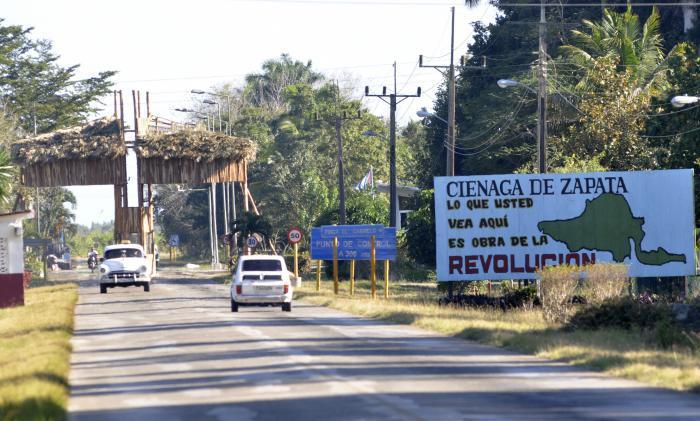
As it became clear in that dinner of Fidel with the charcoal workers when the Revolution was just beginning its victorious march, this immense work does not forsake the place where not only many humble and forgotten people lived, but also where an event that forever marked with shame the history of imperialist and mercenary invasions in America and the rest of the world took place.
That is why the unforgettable days of April 16-19 serve as an essential motivation to promote social works which since those early years of the Revolution to date, have been premised in order to ensure, first, the dignity of the charcoal families and then, their full access to all social welfare.
Among the new endeavors is a children's home with a capacity to care for ten children of working mothers in the locality of Playa Girón. This is one of the actions underway in this territory, in honor of the 64th anniversary of the Cuban victory on April 19, 1961.
Bienvenido Roig Chirino, first secretary of the Party in that municipality of Matanzas, explained that the center is under the protection of the Ministry of Tourism in the province, and provides a solution to an old claim, in the first place, of the mothers who work in the tourist village of that town.
Another of the works that will be made available to the residents of the Zapata Swamp, in that popular council, is the construction of a funeral chapel.
According to Roig Chirino, work is also being done on the revival of the Girón Museum, on a new microbiology laboratory and on the completion of a freezing chamber for the preservation of fish. New Etecsa services are also being incorporated in the communities of Soplillar, Pálpite and Los Hondones.
As a novelty, the René Ramos Latour UEB is venturing into the export of red crabs, crustaceans that until now were considered unusable due to their high toxicity.
The execution of economic and social works also includes the reconstruction of El Peaje, a distinctive symbol of the Zapata Swamp.
As regards foodstuffs, he considered as the most striking aspect the production, for the first time in the territory, of five hectares of imported seed potatoes, with a favorable balance.
He assured that the municipality produces around 40% of the various crops it consumes, a higher volume than what was achieved until five years ago. The production of grains and vegetables is assumed, above all, in backyards and plots, he emphasized.
The problem with the water supply continues to be the most worrisome issue for the locals, since the water is supplied - not without difficulty - from the Jagüey Grande territory, something that is now more complex due to the limitations in the electric service.
He admitted, however, that there has been some improvement with the installation of more powerful pumping equipment, which facilitates the transfer of a greater flow of the liquid.















